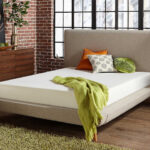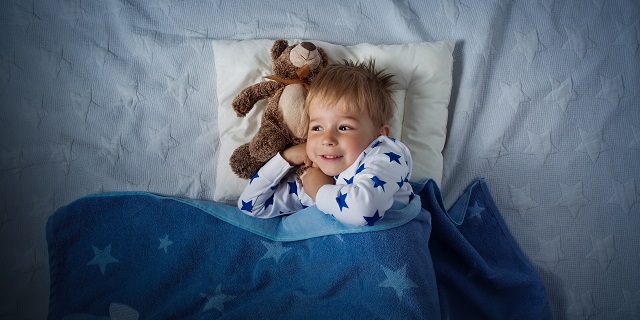
Weighted therapy blankets are special blankets designed to distribute the feeling of a deep pressure touch across the body evenly, which creates a soothing effect. This can help children who may have difficulty sleeping, but some scientists believe that also children who have autism, ADHD, anxiety or sensory integration disorder can benefit from a weighted therapy blanket as well.
Weighted blankets are filled with materials that apply deep pressure stimulation on those wearing them. Usually, they are filled with cotton, glass beads or other materials to apply weight on the body that gives a sense of security and relaxation. They can be used to aid sleep, but also to provide anxiety reduction in the daytime and can serve as an adaptive tool during rest time or “time out” at home, clinic or school.
How Do They Work?
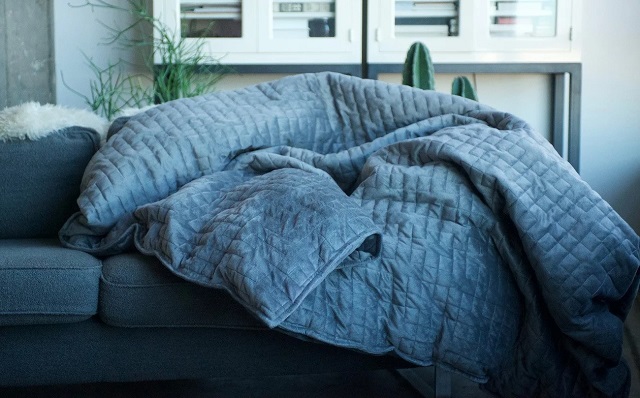
The human body is very sensitive and responds to touch and pressure. Like a baby that can be soothed when it is picked up, the human body can be soothed by applying deep pressure stimulation. Applying a weighted blanket makes the body feel as same as when we are hugged or held like a baby.
And while some people are open to being hugged, those with autism or sensory processing issues may not be. You can choose a weighted therapy blanket to help your child, patient or student with autism, sensory processing disorder, anxiety or ADHD.
The pressure from the extra weight mimics a therapeutic technique known as deep pressure stimulation which uses hands-on pressure to relax the nervous system and can help lessen anxiety, improve mood and relieve pain. With weighted blankets, a similar effect is achieved from having the blanket wrapped around the body.
The firm, snug hug of the weighted blanket wrapped around the kid helps him or her to relax enough to drift off to sleep. This sensation and its effect mimicked with a weighted blanket are the basis for weighted blanket therapy.
Benefits of Weighted Therapy Blankets for Children with Autism, ADHD and Sensory Integration Disorder
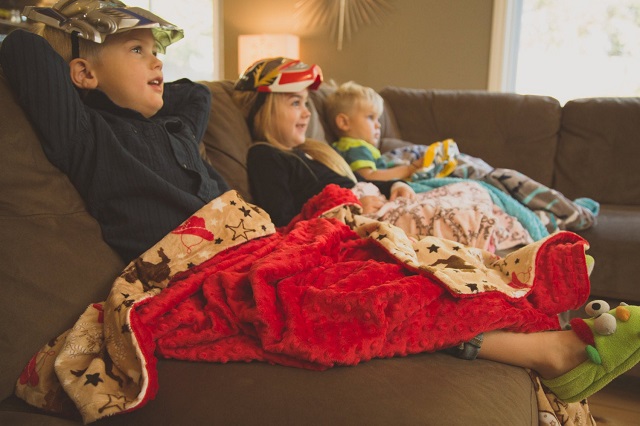
When a child is upset, a big hug can help. Researchers have found that deep-pressure touch can help release serotonin which can help to reduce anxiety and create a feeling of calm. Also, the neurotransmitter serotonin is important for the creation of melatonin, known as the “sleepy” hormone that helps us fall asleep. For children with the abovementioned conditions, getting a good night sleep can be difficult and weighted blankets can help them experience a good night rest.
Some researchers believe that weighted blankets are rising in popularity because naturally, our bodies learn to relax under the weight, fall asleep more quickly and begin to love their weighted blanket, so it turns into a comforting sleep solution.
With weighted blanket use, the sleeping time can increase and movements during sleep can decrease. While there is more research to be done, the following are some of the positive effects of weighted blankets that studies have found.
- Reducing anxiety
- Calming effects
- Positive impact on sleep time and behaviour
- Lowering physiological indicators of stress, including pulse rate, blood pressure and more
How to Choose Weighted Blankets for Children
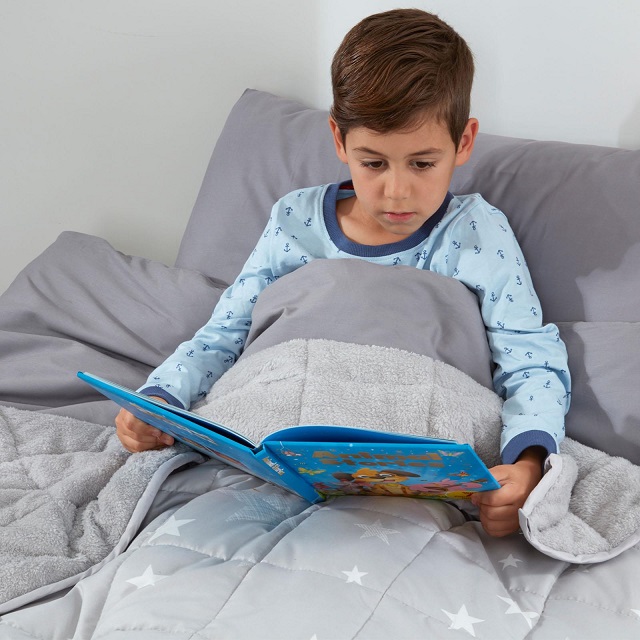
To begin with, remember that before trying a weighted blanket or any other sensory-based interventions with your kid, make sure they have been evaluated by their paediatrician or an occupational therapist. Also, keep in mind that most manufacturers don’t recommend these blankets for children under the age of two.
So, what are other weather therapy blanket considerations you need to be aware of when choosing kids weighted blankets? It’s important to consider two main features – fabric and weight. The style of fabric you choose depends on the child’s sensory preferences, so you may want to consider colour, texture and pattern.
There are many different weighted blankets fabrics out there, so if you choose carefully, you can find one that meets your child’s interests. The idea behind the weighted blanket is to be a positive experience, so make sure to choose one that will entice your kid.
When it comes to deciding on the blanket’s weight, a general guideline is to aim for approximately 10% of your child’s body weight. You want the weight to be heavy enough to provide deep touch pressure, but not so heavy that it poses a safety risk during sleep time.
How to Use Kids Weighted Blankets
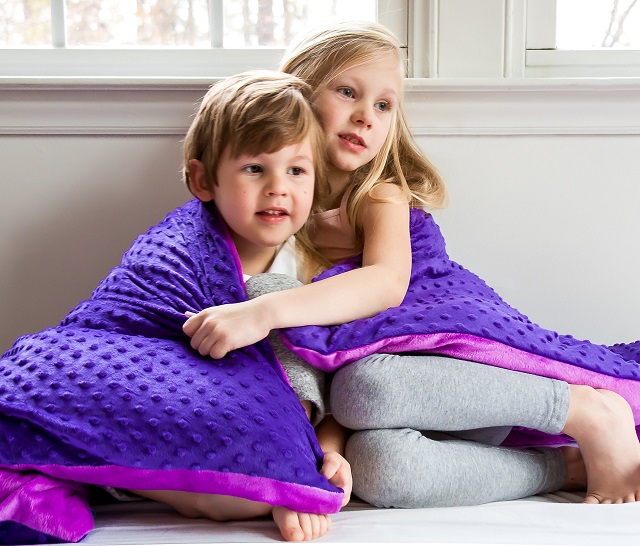
A weighted blanket can be used on top of a child laying down or draped over him or her when standing or sitting. Every kid has different sensory needs and preferences, so it’s important to let them find what works best for them.
There are many different ways you could use your kids weighted blanket – wrap them in, drape it over their shoulders, lay it flat on top of them when they are laying in bed at night, whenever and wherever your kid needs the deep touch pressure input.
As we all know, if a child is not sleeping, the parents are not sleeping either. Lack of sleep can have a negative effect on the child, which in turn can affect the whole family. For many years, therapists have used weighted blankets to calm children with autism, anxiety and sensory processing disorders and now when these blankets are booming on the market, both parents and children are enjoying their benefits.





